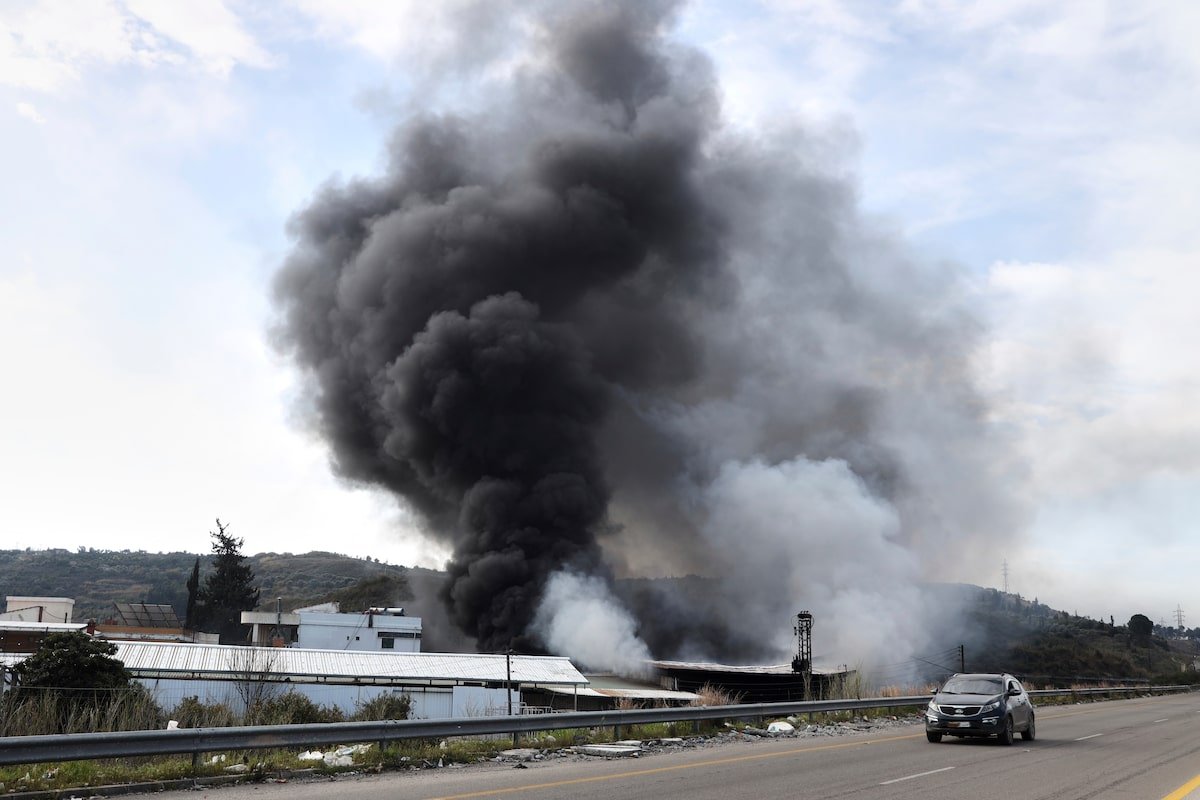
Smoke rises from a factory hit during clashes in the outskirts of Latakia, Syria, on March 7.Omar Albam/The Associated Press
Dozens of people were killed Thursday and Friday as Syria appeared to be on the verge of slipping back into large-scale sectarian violence.
The centre of the fighting was the coastal region of Latakia, home to much of Syria’s Alawite minority community, and the ancestral homeland of the country’s former dictator, Bashar al-Assad.
Syria’s interim government, which is dominated by the Islamist HTS militia that swept to power following the Dec. 8 fall of Mr. al-Assad, said the fighting had begun Thursday when “regime remnants” carried out an ambush in the town of Jableh that killed 16 members of the official security forces.
That was followed by a large mobilization of the new government’s security forces, who could be seen heading to the coastal region in pickup trucks, some with machine guns mounted on the back. In videos posted online, government fighters, who are predominantly Sunni Muslims, could be seen shouting that they were fighting a “holy war” against the country’s Alawites, who belong to an offshoot of Shia Islam.
Black-clad government troops could also be seen deploying on the streets of Damascus, and gunshots were heard in the southwestern Mezzeh area of the capital after dark on Thursday. On Friday, a crowd gathered outside the Firdaws Mosque in the city, chanting “God is Great!” as well as slogans against Iran, which backed the Assad family dynasty through its five-decade rule in Syria.
The U.K.-based Syrian Observatory for Human Rights reported that 71 people had been killed Thursday night and Friday morning, including 35 members of the official security forces as well as 32 “gunmen affiliated to the former regime army,” and four civilians.
The bloodshed on the coast follows days of escalating smaller clashes in the south and centre of the country, and threatens to shatter the delicate stability that interim president Ahmed al-Sharaa, the former leader of HTS, has imposed on the country since taking office following the fall of Mr. al-Assad.
Human rights groups, religious minorities and women’s rights activists have all expressed increasing concern about the Islamist-dominated nature of the interim government, which is supposed to govern until a new constitution is approved. The gun battles between government fighters and religious minority groups will only add to those concerns.
After the mobilization of government forces, Ghiath Dala, a former officer in Mr. al-Assad’s army, posted a statement announcing the creation of the “Military Council for the Liberation of Syria,” which he said would fight to free Syria from “terrorist forces” – a reference to HTS, which is recognized as a terrorist group by the United Nations Security Council.
“Until yesterday, I was sure that there are no regime remnants, that all the regime members were in Dubai, not Syria,” said Majed, a 25-year-old medical doctor and member of the Alawite community in the coastal city of Tartus. “After today, I realize that not all of the regime’s foot soldiers were able to follow their leaders to Dubai, meaning that if there is a stable country, if there is justice, they will be the ones who are punished.”
The Globe and Mail is not publishing Majed’s family name out of concern for his safety. “No one is causing any trouble because of your ID – so far,” said Majed, referring to fears that people with Alawite names could be stopped at checkpoints by government forces. “But we are scared this will happen.”
The clashes between government forces and the Alawite community come just as tensions were starting to ease between the official security forces and the country’s Druze minority. Two people were killed last weekend in clashes at the entrance to Jaramana, a predominantly Druze suburb of Damascus, as local gunmen sought to keep HTS fighters from entering.
When The Globe visited Jaramana on Sunday, Druze fighters armed with Kalashnikov assault rifles and at least one rocket-propelled grenade manned a concrete checkpoint on the road connecting Jaramana to the capital. Groups of Druze gunmen circled the city in pickup trucks, saying they intended to keep HTS from entering the city.
The situation was exacerbated by a declaration from Israel – which has occupied Syria’s Golan Heights since a 1967 war, and which has taken additional territory inside Syria since the fall of Mr. al-Assad’s regime – that it stood ready to “defend” Syria’s Druze against HTS.
“There’s a lot of tension right now, because HTS wants to take over the city without consulting the local community,” said Farhan Burjas, a 47-year-old lawyer in Jaramana. “We want police in Jaramana, with a professional police chief, not some sheik who has no experience in the law.”
The situation in Jaramana cooled on Monday after government forces obtained a warrant to enter and arrest one man who had been involved in the Friday shootings. In an apparent sign of goodwill, the government troops entered the city flying the Druze flag. But the armed local patrols resumed immediately afterwards.
A grey-haired man named Samir, the commander of one of the units of Druze fighters circling the city in a pickup truck, said Israel’s intervention wasn’t needed or wanted. “Jaramana doesn’t need to be protected by anyone,” he said, nodding at the six men with Kalashnikovs sitting in the back of a white Toyota pickup truck. “These young people will protect us.”
